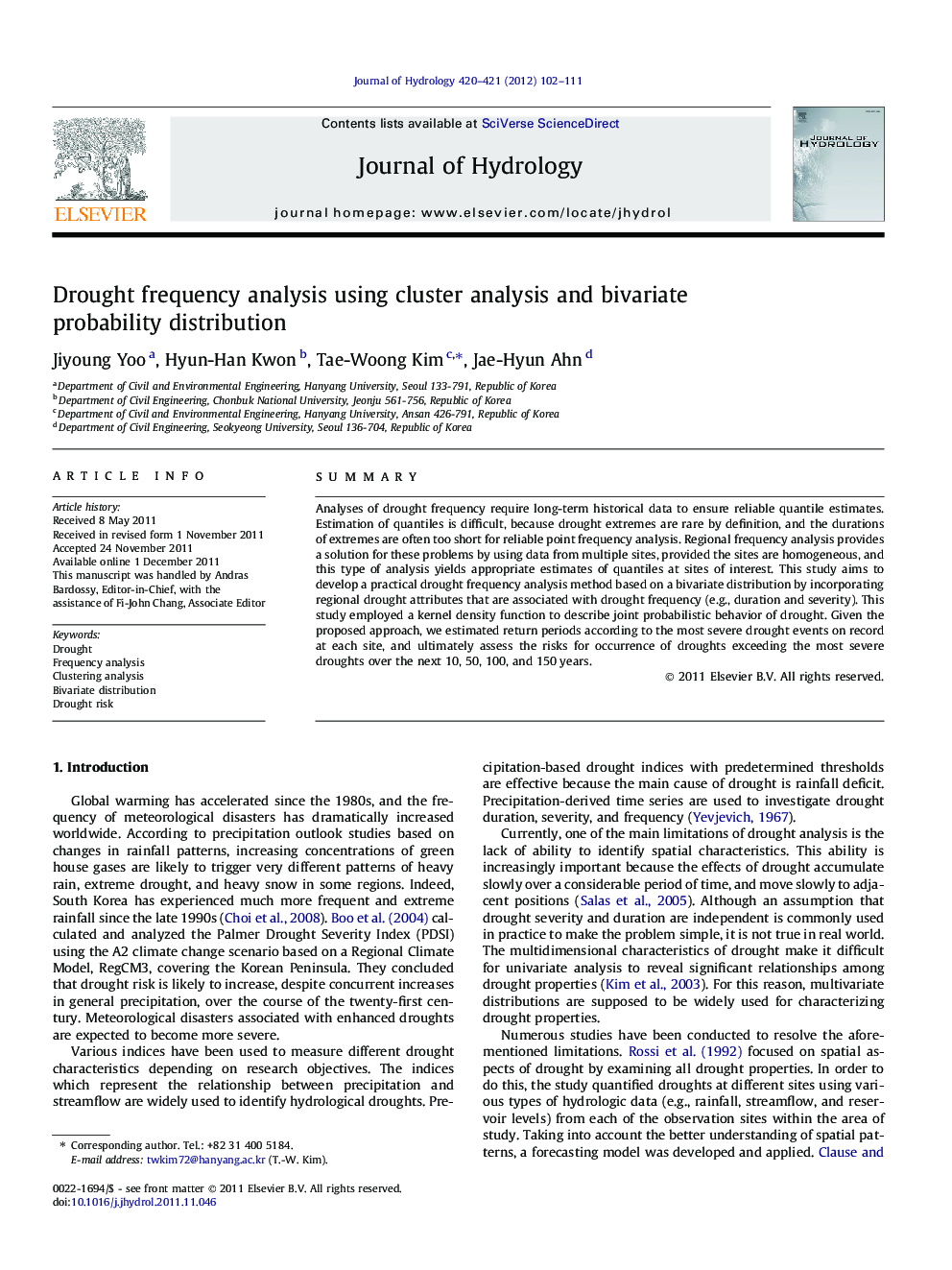| Article ID | Journal | Published Year | Pages | File Type |
|---|---|---|---|---|
| 4577158 | Journal of Hydrology | 2012 | 10 Pages |
SummaryAnalyses of drought frequency require long-term historical data to ensure reliable quantile estimates. Estimation of quantiles is difficult, because drought extremes are rare by definition, and the durations of extremes are often too short for reliable point frequency analysis. Regional frequency analysis provides a solution for these problems by using data from multiple sites, provided the sites are homogeneous, and this type of analysis yields appropriate estimates of quantiles at sites of interest. This study aims to develop a practical drought frequency analysis method based on a bivariate distribution by incorporating regional drought attributes that are associated with drought frequency (e.g., duration and severity). This study employed a kernel density function to describe joint probabilistic behavior of drought. Given the proposed approach, we estimated return periods according to the most severe drought events on record at each site, and ultimately assess the risks for occurrence of droughts exceeding the most severe droughts over the next 10, 50, 100, and 150 years.
► We suggested the incorporation of cluster analysis into drought frequency analysis. ► The method increased data and lead more comprehensive drought analyses. ► The drought risk map would be used for long-term risk management at the national level.
